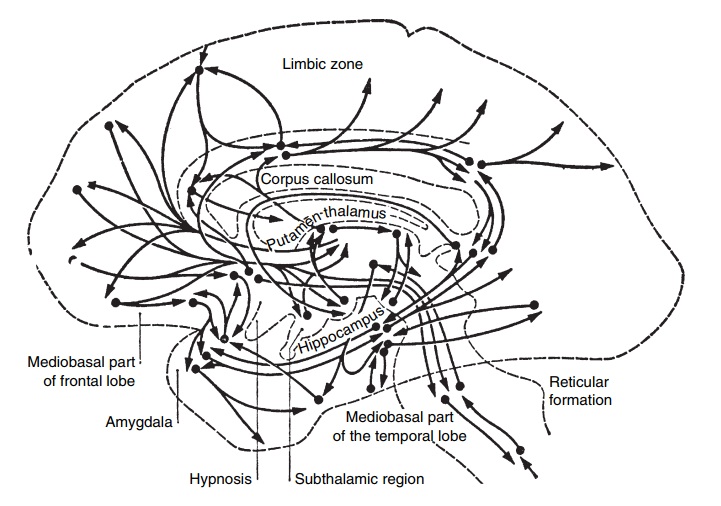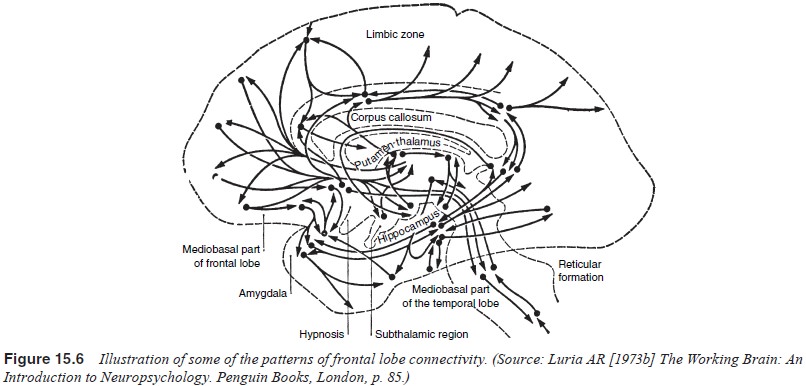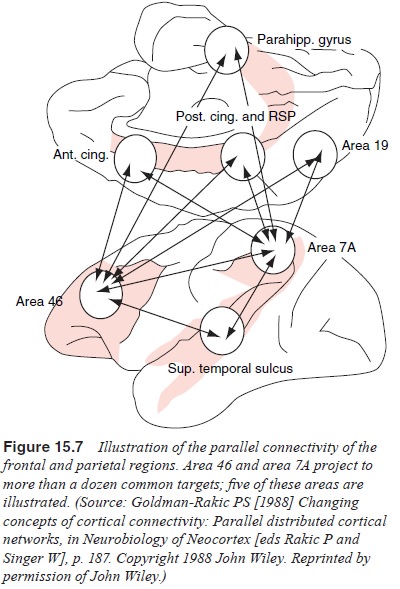Chapter: Essentials of Psychiatry: Cognitive Neuroscience and Neuropsychology
Executive Functioning and the Frontal Lobes

Executive Functioning and the
Frontal Lobes
Most researchers now agree that the study of
frontal lobes repre-sents an important aspect of attempts to understand of
humans’ higher mental functions, such as planning, decision-making, rea-soning
and judgment, which are often referred to as executive processes.
The frontal lobes of the human brain comprise all
the tis-sue anterior to the central sulcus. Four major subdivisions of the
frontal lobes have been suggested: 1) the motor area; 2) the pre-motor area; 3)
the prefrontal area, and 4) the basomedial portion of the lobes (Walsh, 1994).
Two prefrontal areas, namely, the orbitomedial
prefrontal cortex and the dorsolateral prefrontal cortex, have been targeted in
much of the research concerning executive processes. The func-tional role of
the frontal system in providing executive control to behavior is probably
related to the extensive reciprocal anatomical connectivity between the frontal
lobes and other brain regions involved in information processing. Numerous
afferent and ef-ferent connections of the frontal lobe have been demonstrated.
The extracortical and transcortical connections of the frontal lobes are
exceedingly complex, especially where the prefrontal cortex is involved (Kolb
and Wishaw, 1990). In general, brain connectivity encompasses three major
types: cortical–cortical, thalamic–cortical, and subcortical–cortical (Figure
15.6). For a detailed review of brain connectivity, the reader is referred to
the works of Pandya and Yeterian (1984) and Goldman-Rakic (1988).
Cortical–cortical connections of the frontal lobes
take on a number of distinct forms (Kolb and Wishaw, 1990). First, as
pre-viously mentioned, connections within the frontal lobes them-selves involve
projections from tertiary cortex in the prefrontal areas to the premotor cortex
and to the motor cortex. Secondly, there are reciprocal connections between the
prefrontal cortex (Brodmann’s areas 8, 9 and 46) and the temporal, auditory and
visual association regions, as well as the medial temporal lobes. Thirdly,
there is another set of reciprocal connections connecting the prefrontal areas
and the anterior and medial temporal regions. Fourthly, there are connections
between prefrontal areas and the limbic system, including a reciprocal
connection between the amygdala and the frontal lobe.
Thalamic–cortical connections include projections
to the prefrontal lobe from the pulvinar, anterior nuclei and dorsomedial
nucleus of the thalamus. In addition, via the dorsomedial nucleus, information
from limbic areas and the hypothalamus is relayed to the frontal lobes for
processing of emotions and internal states.
Subcortical–cortical connections include
projections from the frontal cortex to various subcortical structures
includ-ing the caudate nucleus, superior colliculus and hypothalamus.
Particular attention has been paid to the interconnectivity of the frontal lobe
and basal ganglia via the corticostriate projection system. Lesions in either
area are associated with similar cogni-tive impairments, such as decreased
cognitive flexibility or set switching (Eslinger and Grattan, 1993

Examination of the connectivity of the frontal lobes has revealed that the pattern of connectivity is best viewed from within the context of the parallel and distributed anatomical network (Figure 15.7).

Related Topics